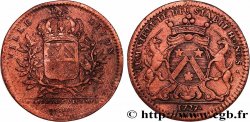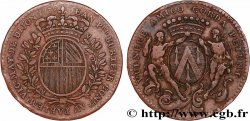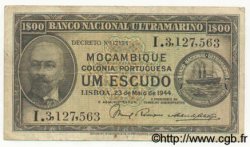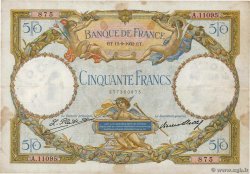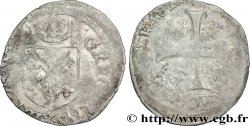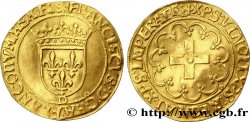得先注册又得到批准才可以报价。为了报价注册. 客户应该得到公司允许,那种过程需要 48 个小时。别等出售结束那一天才登记。您报价的话等于您赞成买那物品,而且按« 保价 » 证明您接受 cgb.fr 因特网拍卖使用法.
报价时只可以出全数值欧元总额。物品描述也说明销售结束时间,结束后出价都不会生效。 报价命令转达有时变动,等到最后秒钟增加否决的可能会。想多了解的话请注意 因特网拍卖常问
购货人不付费
购货人不付费
| 估算 : | 45 € |
| 价格 : | 7 € |
| 最高出价 : | 9 € |
| 拍卖结束日期 : | 21 October 2013 18:21:00 |
| 竞拍人 : | 4 竞拍人 |
种类 François Malateste
日期: 1652
材质 red copper
直径 27,4 mm
模子方针 6 h.
侧面 lisse
稀少度 R1
出版目录中的项代码 :
正面
正面的文字 VICIT. AMOR. PATRIAE. 1652.
正面的说明书 Armes de Maleteste : de gueules à une face d'or accompagnée en chef d'une fleur de lys d'or et en pointe d'un croissant d'argent.
正面的翻译 L'Amour pour sa patrie est vainqueur - 1652.
背面
背面的文字 FR. MALETESTE. ADV. EN. PARL. VIC. MAIEUR. DE. DIION.
背面的说明书 Armes de Dijon.
评论
François Malateste était l’avocat du duc d’Épernon alors gouverneur. Il fut désigné par Millotet, son prédécesseur, qu’on voulait réélire mais qui avait été prié par le duc d’Épernon de ne pas accepter attendu que celui-ci avait promis à M. le prince qui n'aimait pas Millotet qu'il n'accepterait pas. Il porte de gueules à une face d’or accompagnée en chef d’une fleur de lys d’or et en pointe d’un croissant d’argent. La devise du revers est tirée de l’Énéide de Virgile
Les maires de Dijon
Dès l’époque de la naissance de la féodalité, la ville de Dijon possédait un maire et en général vingt magistrats municipaux, ou échevins. Ces magistrats sont confirmés en 1187, lorsqu’une charte de commune est accordée par le duc Hugues III. En 1192, pour la première fois, le maire dijonnais est élu.
A la fin du XIIIe siècle, ce maire prend le titre de vicomte maïeur, confirmé en 1477-1479 par Louis XI, qu’il gardera jusqu’en 1789. Depuis la fin du XVe siècle (1491), la charge de vicomte maïeur est anoblissante ainsi que celle d’échevin à compter du XVIe siècle. Le vicomte maïeur avait le droit de haute, moyenne et basse justice, le droit de scel et de visite. Les clefs de la ville lui sont confiées et il dirige les archers ainsi que les compagnies des sept quartiers, cette fonction militaire étant importante jusqu’au XVIIe siècle.
Fonction élective, le vicomte maïeur est élu par les habitants, ni mendiants, ni étrangers, qui payent la taille, en général la veille de la Saint-Jean. Cette élection a lieu sur le parvis de l'église saint Philibert. A partir de 1669, il est permis au maire de porter "une robe longue de satin plein, de couleur violet, doublée de satin rouge cramoisi, comme le prévôt des marchands de Lyon, avec chaperon de même étoffe et couleur bordée d’hermine" afin de se distinguer des habitants.
En 1692, la fonction de vicomte maïeur est transformée en office héréditaire tandis que l’élection n’est plus alors qu’une confirmation du choix royal fait par le gouverneur au nom du roi.
Voir leur liste complète à http://fr.wikipedia.org/wiki/Liste_des_maires_de_Dijon.
François Malateste was the lawyer of the Duke of Épernon, then governor. He was appointed by Millotet, his predecessor, who wanted to be re-elected but who had been asked by the Duke of Épernon not to accept, given that the latter had promised M. the prince who did not like Millotet whom he would not accept. It bears a gules face with a gold face accompanied in chief by a gold fleur-de-lis and in base by a silver crescent. The motto on the reverse is taken from Virgil's Aeneid The mayors of Dijon From the time of the birth of feudalism, the city of Dijon had a mayor and generally twenty municipal magistrates, or aldermen. These magistrates were confirmed in 1187, when a municipal charter was granted by Duke Hugh III.. In 1192, for the first time, the mayor of Dijon was elected.
At the end of the 13th century, this mayor took the title of viscount mayor, confirmed in 1477-1479 by Louis XI, which he kept until 1789. Since the end of the 15th century (1491), the position of viscount mayor has been ennobling, as has that of alderman since the 16th century.. The Viscount Mayor had the right of high, middle and low justice, the right of seal and visitation. The keys to the city were entrusted to him and he commanded the archers as well as the companies of the seven districts, this military function being important until the 17th century..
An elective function, the Viscount Mayor is elected by the inhabitants, neither beggars nor foreigners, who pay the tax, generally on the eve of Saint John.. This election takes place on the forecourt of the Saint Philibert church. From 1669, the mayor was allowed to wear \\\"a long robe of full satin, purple in color, lined with crimson red satin, like the provost of the merchants of Lyon, with a chaperon of the same fabric and color edged with ermine\\\" in order to distinguish himself from the inhabitants..
In 1692, the function of Viscount Mayor was transformed into a hereditary office while the election was then only a confirmation of the royal choice made by the governor in the name of the king..
See their full list at http://fr. Wikipedia. org/wiki/List_of_mayors_of_Dijon
Les maires de Dijon
Dès l’époque de la naissance de la féodalité, la ville de Dijon possédait un maire et en général vingt magistrats municipaux, ou échevins. Ces magistrats sont confirmés en 1187, lorsqu’une charte de commune est accordée par le duc Hugues III. En 1192, pour la première fois, le maire dijonnais est élu.
A la fin du XIIIe siècle, ce maire prend le titre de vicomte maïeur, confirmé en 1477-1479 par Louis XI, qu’il gardera jusqu’en 1789. Depuis la fin du XVe siècle (1491), la charge de vicomte maïeur est anoblissante ainsi que celle d’échevin à compter du XVIe siècle. Le vicomte maïeur avait le droit de haute, moyenne et basse justice, le droit de scel et de visite. Les clefs de la ville lui sont confiées et il dirige les archers ainsi que les compagnies des sept quartiers, cette fonction militaire étant importante jusqu’au XVIIe siècle.
Fonction élective, le vicomte maïeur est élu par les habitants, ni mendiants, ni étrangers, qui payent la taille, en général la veille de la Saint-Jean. Cette élection a lieu sur le parvis de l'église saint Philibert. A partir de 1669, il est permis au maire de porter "une robe longue de satin plein, de couleur violet, doublée de satin rouge cramoisi, comme le prévôt des marchands de Lyon, avec chaperon de même étoffe et couleur bordée d’hermine" afin de se distinguer des habitants.
En 1692, la fonction de vicomte maïeur est transformée en office héréditaire tandis que l’élection n’est plus alors qu’une confirmation du choix royal fait par le gouverneur au nom du roi.
Voir leur liste complète à http://fr.wikipedia.org/wiki/Liste_des_maires_de_Dijon.
François Malateste was the lawyer of the Duke of Épernon, then governor. He was appointed by Millotet, his predecessor, who wanted to be re-elected but who had been asked by the Duke of Épernon not to accept, given that the latter had promised M. the prince who did not like Millotet whom he would not accept. It bears a gules face with a gold face accompanied in chief by a gold fleur-de-lis and in base by a silver crescent. The motto on the reverse is taken from Virgil's Aeneid The mayors of Dijon From the time of the birth of feudalism, the city of Dijon had a mayor and generally twenty municipal magistrates, or aldermen. These magistrates were confirmed in 1187, when a municipal charter was granted by Duke Hugh III.. In 1192, for the first time, the mayor of Dijon was elected.
At the end of the 13th century, this mayor took the title of viscount mayor, confirmed in 1477-1479 by Louis XI, which he kept until 1789. Since the end of the 15th century (1491), the position of viscount mayor has been ennobling, as has that of alderman since the 16th century.. The Viscount Mayor had the right of high, middle and low justice, the right of seal and visitation. The keys to the city were entrusted to him and he commanded the archers as well as the companies of the seven districts, this military function being important until the 17th century..
An elective function, the Viscount Mayor is elected by the inhabitants, neither beggars nor foreigners, who pay the tax, generally on the eve of Saint John.. This election takes place on the forecourt of the Saint Philibert church. From 1669, the mayor was allowed to wear \\\"a long robe of full satin, purple in color, lined with crimson red satin, like the provost of the merchants of Lyon, with a chaperon of the same fabric and color edged with ermine\\\" in order to distinguish himself from the inhabitants..
In 1692, the function of Viscount Mayor was transformed into a hereditary office while the election was then only a confirmation of the royal choice made by the governor in the name of the king..
See their full list at http://fr. Wikipedia. org/wiki/List_of_mayors_of_Dijon








 对产品描述纠错
对产品描述纠错 打印
打印 分享我的选择
分享我的选择 提问
提问 Consign / sell
Consign / sell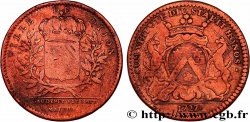
 产品介绍
产品介绍

